Sandblasters can handle many things, from restoring a vehicle to cleaning up rusty metal and preparing a surface for painting. But these wonder machines can be bulky and industrial-like most of the time, pushing many towards more portable options. Enter handheld sandblasters—the ultimate compact and portable devices that can take on some tough jobs similar to their stationary counterparts.
These machines are perfect for consumers who prefer to work mobile or have DIY projects to handle at home. But before businesses enter this market, they must know how to choose handheld sandblasters that are perfect for their target consumers. This guide will show you everything you need to consider when choosing this device for your buyers in 2025.
Table of Contents
What are sandblasters?
Why sell handheld sandblasters?
The types of handheld sandblasters
7 specifications to keep in mind when stocking handheld sandblasters
3 other features to consider
Final thoughts
What are sandblasters?
Essentially, sandblasters shoot abrasive materials at high speeds to clean, smooth, or roughen a surface. People use them across various industries, from automotive repair to construction and even in artistic fields like etching. Although larger, more industrial sandblasters exist, this article will focus on the handheld variety.
Why sell handheld sandblasters?
Handheld sandblasters are all about mobility and flexibility. They are a great choice when consumers need something portable and easy to use for smaller jobs or hard-to-reach places. These items are also easier to handle and more convenient than larger equipment.
Plus, they’re perfect for spot work and detailed tasks. Whether restoring old furniture, cleaning a metal fence, or doing touch-up work on a car, a handheld blaster gives buyers the right balance of power and control.
The types of handheld sandblasters
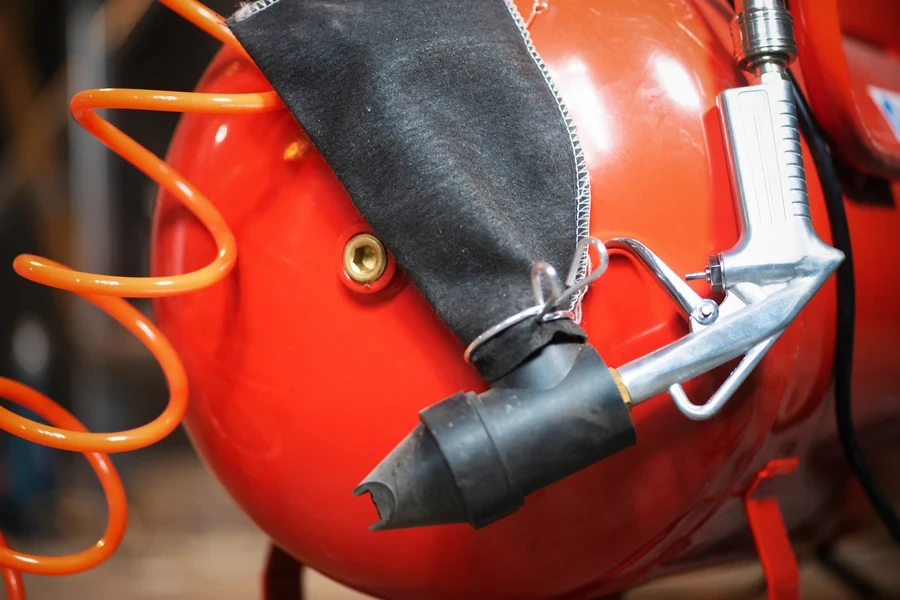
Not all handheld sandblasters are built the same, and knowing the difference between the various types can help businesses stock the right one. Here are the three main categories, along with what makes each unique.
1. Gravity-feed handheld sandblasters
Gravity-fed models store their abrasive materials (like sand or glass beads) in a small hopper attached to the top of the device. Then, gravity helps feed the abrasive material into the air stream to shoot out of the nozzle when the user pulls the trigger.
What makes them special?
- Super simple to use: Consumers only fill the hopper, point, and pull the trigger.
- Lower pressure: Since these models use gravity, the pressure is usually lower, making them great for smaller or more delicate tasks.
- A small hopper means more refilling: The hopper can only hold so much, so consumers may need to stop and refill often.
Best for Light-duty tasks like etching glass, engraving, or small-scale cleaning.
2. Siphon-feed handheld sandblasters
Siphon-feed models use air pressure to suck up the abrasive material from an external container (often a bucket) and then blast it out through the nozzle. Most experts believe this type is more versatile than gravity-fed blasters.
What makes them special
- Bigger abrasive capacity: Since users can store the abrasive media externally, they can use larger amounts without needing to stop for frequent refills.
- Moderate pressure: Siphon-feed models deliver more power than gravity-fed systems, making them good for medium-duty work.
- Versatile media: Depending on the task, consumers can use various abrasives with this model.
Best for removing paint, cleaning up metal surfaces, and general-purpose jobs where consumers may need a bit more power.
3. Pressure-feed handheld sandblasters
If consumers need more punch, a pressure-fed model might be the way to go. These systems use a pressurized tank to push the abrasive media through the nozzle at a higher velocity, which means they can easily tackle tougher jobs.
What makes them special
- Higher pressure: With more force behind the blast, these blasters are great for heavy-duty tasks.
- Faster work: The high pressure makes removing rust, paint, or grime a breeze, so consumers finish the job quicker.
- Pressure control: Many of these blasters allow you to adjust the pressure, so you can dial it up or down depending on the surface you’re working on.
Best for tougher jobs like rust removal, large surface prep, and industrial-level cleaning projects.
7 specifications to keep in mind when stocking handheld sandblasters
1. Air pressure (PSI)
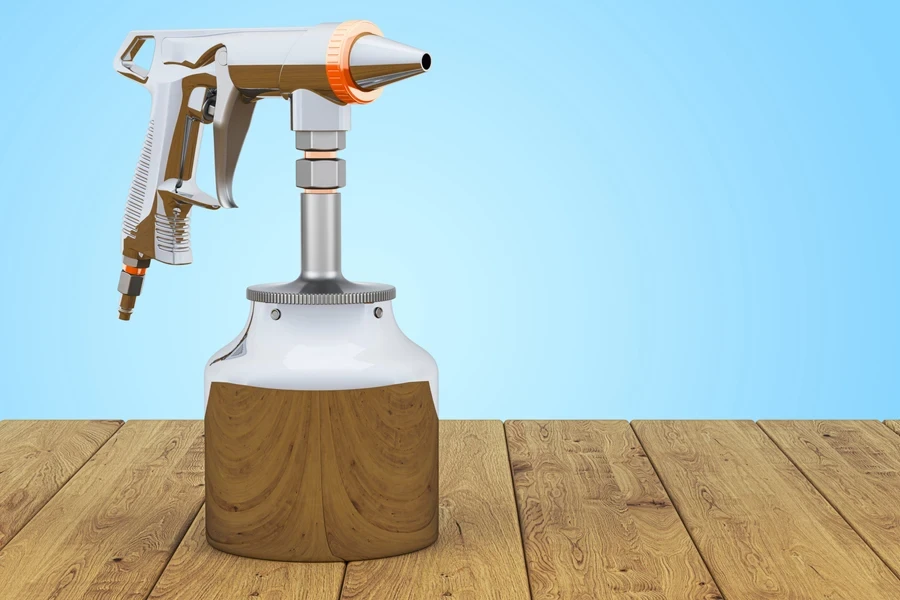
The air pressure (measured in PSI—pounds per Square Inch) shows the force the sandblaster uses to blast the abrasive material. The higher the PSI, the more powerful the blast.
- Light-duty jobs (like delicate glass etching) usually need a PSI in the 60-100 range.
- Moderate jobs (like rust or paint removal) call for 90-120 PSI.
- Heavy-duty projects (like prepping large metal surfaces) require 100-150 PSI or higher.
Note: Ensure the device’s air compressor can supply the PSI required for the sandblaster businesses are stocking.
2. Airflow (CFM)
CFM (Cubic Feet per Minute) measures how much air the blaster uses in a minute. It’s important because sandblasters need a consistent air stream to work effectively. Like air pressure, the higher the CFM, the more air the sandblaster will need.
- Smaller jobs that don’t take a ton of air can get by with a lower CFM (around 3-6 CFM).
- Medium-duty jobs (like frequent use or larger surfaces) work best with 7-12 CFM.
- Heavy-duty use (professional-level, continuous blasting) needs a higher airflow of 13 CFM or more.
If buyers also want to buy air compressors, businesses must remind them to check if they can keep up with sandblaster CFM requirements; otherwise, they won’t work efficiently.
3. Abrasive media compatibility
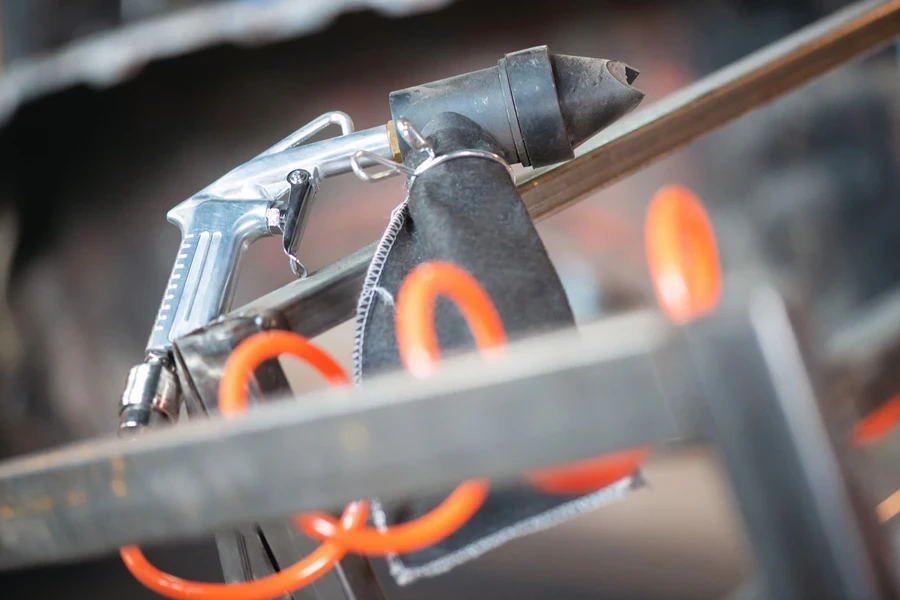
What kind of abrasive do consumers plan on using? Not all sandblasters can handle every type of media, so ensure the one retailers stock is compatible with the abrasive target consumers need for their project. Here’s a quick rundown of common media types:
| Abrasive media | Description |
| Silica sand | Once the standard, it has now been largely replaced due to health risks (silicosis). It’s falling out of use in favor of safer options. |
| Aluminum oxide | This abrasive media is tough and durable, making it perfect for heavy-duty jobs like rust removal or prepping surfaces for paint. |
| Glass beads | This abrasive material is gentler than others, giving surfaces smoother finishes. People often use them for polishing or cleaning. |
| Walnut shells | These abrasive materials are the softest, making them great for cleaning more delicate surfaces without scratching or damaging them. |
| Sodium Bicarbonate (Soda) | This material is ideal for light cleaning tasks, like removing graffiti or stripping paint, without damaging the surface underneath. |
4. Nozzle size and material
The nozzle is where the magic happens, as it controls the abrasive media’s flow. That’s why the nozzle size and material affect the sandblaster’s performance. Here’s a look at each one.
- Material: Manufacturers can make nozzles from ceramic, hardened steel, or tungsten carbide. Ceramic is cheaper but wears out faster, especially with hard abrasives. Tungsten carbide is pricier but lasts much longer, making it the better choice for heavy use.
- Size: Smaller nozzles (1.5 mm) give consumers a tighter, more focused stream of media, ideal for detailed work. Conversely, larger nozzles (up to 6 mm) spread the abrasive over a bigger area, which is better for larger surfaces.
5. Tank capacity
The size of the pressurized tank matters a lot for pressure-fed models. A bigger tank means fewer stops to refill, allowing consumers to work longer without interruptions. Here’s a look at the different sizes.
| Tank size | Description |
| Smaller tanks (0.5 to 1 gallon) | This size is fine for light tasks or short bursts. |
| Medium tanks (1 to 3 gallons) | This tank size gives consumers more work time between refills, which is perfect for medium-sized jobs. |
| Larger tanks (4+ gallons) | This tank size is the best for continuous, heavy-duty blasting. |
6. Weight and ergonomics

Since consumers will hold the sandblaster while working, weight and comfort are non-negotiable factors. They’ll want something lightweight yet durable enough to withstand high pressure. Usually, the choice is between plastic and metal housings.
| Housing type | Description |
| Plastic housings | These are lightweight, making them easier to handle, but they may only last for a short time under tough conditions. |
| Metal housings | Often made from aluminum or steel, metal housings are more durable but can be heavier. Thus, they are better suited for heavy-duty work where durability is more important. |
7. Dust collection and control
Sandblasting produces a lot of dust, so consumers must consider how they’ll manage it. Thankfully, some models have built-in dust collection systems, while others use external vacuums or extractors.
Built-in collectors are handy for smaller tasks and quick cleanups. Blasting cabinets, on the other hand, can help contain the dust in an enclosed area, making them ideal for indoor work or sensitive environments.
3 other features to consider
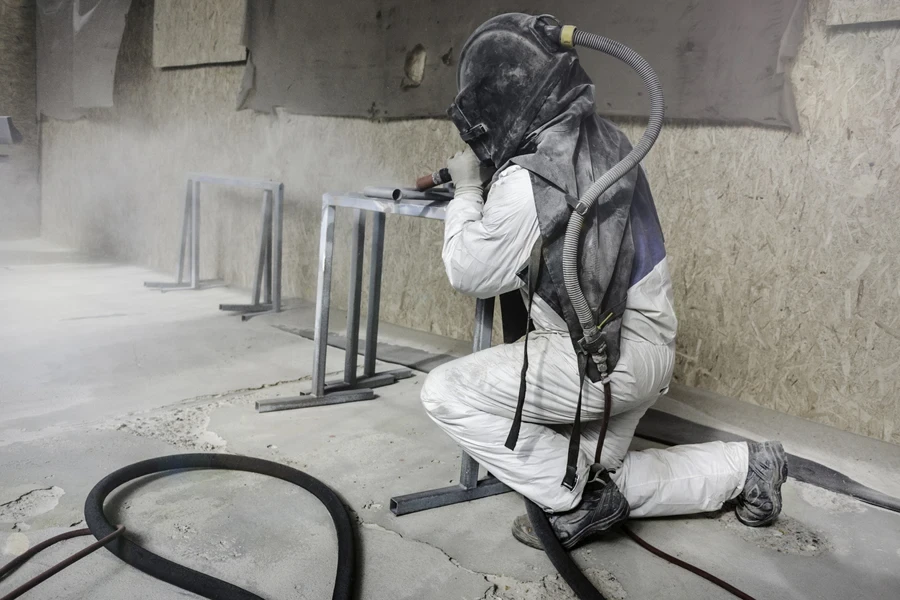
1. Trigger comfort and locking options
A comfortable trigger makes a big difference, especially if consumers use the device for long periods. Some models come with a locking trigger, so users don’t have to keep squeezing it throughout the job, which helps reduce hand fatigue.
2. Adjustable pressure settings
Not all jobs require the same amount of power, so having the option to adjust the pressure gives users more control over their work. This feature is especially useful when switching between delicate tasks and aggressive blasting.
3. Quick-change nozzles
If consumers switch between tasks requiring different nozzle sizes often, having a quick-change system can save them a lot of time. Look for sandblasters that can let them swap out nozzles without needing any tools, which is a huge convenience when working on various surfaces.
Final thoughts
Consumers often choose their equipment based on their work type, and handheld sandblasters are no different. However, they must also match the PSI and CFM ratings with their air compressor. Businesses must clearly state these specs so consumers know what to expect.
They must also consider ergonomics and abrasive media compatibility. After all, consumers want something that feels comfortable in their hands. By considering all these key factors, businesses will be able to offer their target buyers sandblasters for any project.
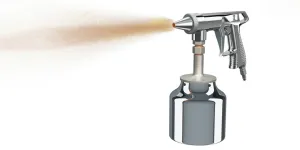




 Afrikaans
Afrikaans አማርኛ
አማርኛ العربية
العربية বাংলা
বাংলা Nederlands
Nederlands English
English Français
Français Deutsch
Deutsch हिन्दी
हिन्दी Bahasa Indonesia
Bahasa Indonesia Italiano
Italiano 日本語
日本語 한국어
한국어 Bahasa Melayu
Bahasa Melayu മലയാളം
മലയാളം پښتو
پښتو فارسی
فارسی Polski
Polski Português
Português Русский
Русский Español
Español Kiswahili
Kiswahili ไทย
ไทย Türkçe
Türkçe اردو
اردو Tiếng Việt
Tiếng Việt isiXhosa
isiXhosa Zulu
Zulu